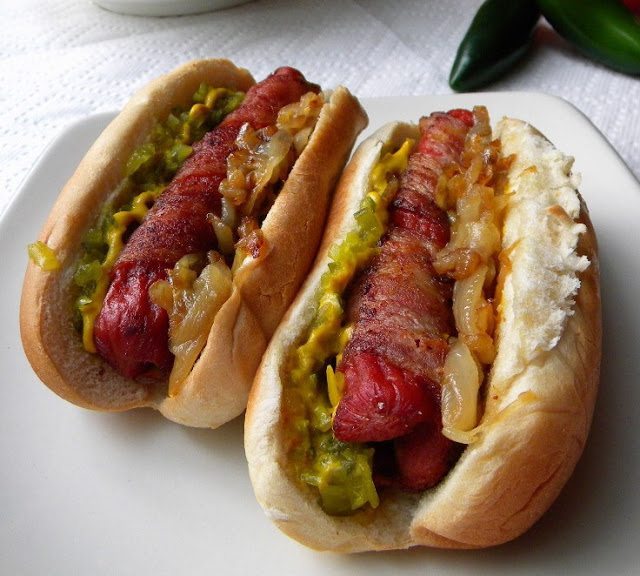By Jefferson Adams
What is more iconically American than a hot dog? From ballparks to campfire cookouts, the humble hot dog has inspired dozens of regional and cultural variations, and won hearts and appetites across the United States and the world. “During peak hot dog season, from Memorial Day to Labor Day, Americans typically consume 7 billion hot dogs,” according to the National Hot Dog and Sausage Council. That’s almost 50,000 hot dogs a minute for three months straight.
However, like so many “quintessentially American” things, hot dogs were not always American. The journey of the classic American hot dog from the fine plates and cultured dining rooms of Vienna and Frankfurt to the simple buns and food carts of New York and Chicago is an immigrant’s tale writ large.
The hot dog’s journey across the border to Mexico and back is a tale of modern culinary adaptation, of a simple sausage coming to a foreign land, catering to local tastes to survive, then re-crossing the border to change the culinary landscape from California to Texas, winning legions of dedicated fans in the process.
Some credit the American version of the hot dog to Antoine or Anton Feuchtwanger, who allegedly switched to buns as early as 1894, when customers failed to return the white gloves he provided to hold the hot sausages. Others say Charles Feltman served “Coney Island Red Hots” in buns at Coney Island as early as 1867.
We may never know the exact origins of the world’s favorite sausage on a bun, but hot dogs on buns were immediately popular.
New York was an early adopter of hot dogs sold from carts by street vendors. The “New York dog” or “New York-style” hotdog, is a natural-casing, all-beef frank topped with sauerkraut and spicy brown mustard, onions optional.
For the hot dog purist, the classic New York Dog is the way to go. But hot dogs are all about adaptability and regional style. The United States is home to more than two dozen distinct regional hot dog styles.
The Chicago-style dog stands tall, with its poppy seed bun, fresh tomatoes, onions, “sport peppers,” bright green relish, dill pickles, celery salt and mustard. In New Jersey, they like to deep fry them and top them with sauteed bell peppers, onions and potatoes. In Philadelphia, a hot dog wrapped in bacon and topped with melted cheese is called a “Texas Tommy,” for no clear reason.
Hot dogs go to Mexico
Sometime in the late ‘70s or early ‘80s, while the humble hot dog was busy doing its thing across America, it crossed the border into Mexico and gave birth to two towering hot dog legends.
In Mexico, hot dogs are often called “dogos” or “jochos,” while vendors are known as “dogueros.” It was dogueros in Hermosillo and Tijuana who gave birth to two, now classic, Mexican variations of the hot dog: the Sonoran Dog and the Danger Dog, aka the bacon-wrapped hot dog. These hot dogs became hugely popular in Mexico, then crossed back over the border and won legions of fans in the United States.
The Hermosillo Sonoran Dog

The Sonoran Dog originated in Hermosillo in the late 1980s. It’s a grilled, bacon-wrapped hot dog, served on a bolillo-style bun and topped with pinto beans, onions, tomatoes and a variety of condiments, including mayonnaise, mustard, green chile sauce, jalapeno salsa, avocado and cotija cheese. The Sonoran Dog quickly jumped the border, and can be found in locales across Southern California and Texas. The Sonoran Dog has become so popular in Arizona that hundreds of establishments now sell some version of it in Phoenix, Tucson and across the southern part of the state.
The Tijuana Danger Dog

Danger Dogs, so-called because of potentially sketchy quality, are also known as bacon-wrapped hot dogs. Danger Dogs originated with Mexican street dogueros in either Tijuana or Hermosillo, and were first served in a bolilloinstead of a hot dog bun. They remain popular in both towns, and their appeal has grown in the United States.
San Francisco’s version of the Danger Dog is also called a Mission Dog, after the Mission District where it first became popular. This San Francisco version of the Danger Dog is typically served with grilled onions, mustard, ketchup, mayonnaise and jalapenos.
So popular is the Danger Dog in Los Angeles that a public campaign in 2010 led the L.A. City Council to proclaim the bacon-wrapped Danger Dog the city’s official hot dog. And it’s not just the Danger Dog, it turns out that Angelinos ate at least 30 million pounds of hot dogs last year alone, including nearly 3 million Danger Dogs. That makes L.A. the country’s top hot-dog town.
The Sonoran Dog and the Danger Dog are just two regional versions among many that have won over both Mexican and American hot dog lovers. They serve as shining examples of the adaptability and influence of the hot dog, and of the Mexican people and their culinary culture.
As America’s love affair with the hot dog endures, look for the popularity of these Mexican hot dog creations to continue to grow beyond the Southwest.
Source: northamericanproject.com





